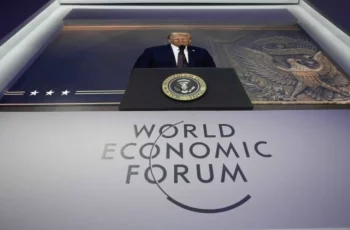
Recently, U.S. President Donald Trump officially put forward a comprehensive peace proposal intended to end the ongoing conflict between Russia and Ukraine. Dubbed by aides as a “final offer,” the plan outlines a series of territorial, security, and economic measures that have already sent shockwaves through diplomatic circles.
Vice President J.D. Vance publicly endorsed the proposal, calling it “clear and fair,” while also warning that the United States would pull out of mediation efforts if the terms were rejected. Days later, the U.S. did just that—walking away from high-level peace talks in London after Ukraine refused to consider core provisions, particularly the recognition of Crimea as part of Russia.
Key Elements of the Trump Peace Plan
The proposed agreement, as revealed by American media and confirmed by sources close to the administration, includes the following points:
Recognition of Crimea as Russian Territory: The U.S. would formally acknowledge Russia’s sovereignty over Crimea, annexed in 2014—a point long viewed as non-negotiable by Moscow.
Informal Recognition of Additional Regions: Without official documentation, the U.S. would effectively accept Russia’s current control over parts of Donetsk, Luhansk, Kherson, and Zaporizhzhia, offering de facto legitimacy.
Ukraine’s Neutral Status in NATO: Ukraine would commit to a formal rejection of NATO membership. However, future accession to the European Union would remain a possibility.
Lifting of Post-2014 Sanctions: The U.S. would repeal sanctions imposed on Russia over the past decade, paving the way for renewed economic cooperation—particularly in energy and industrial sectors.
Security Guarantees from Europe, Not the U.S.: Ukraine would be offered vague, non-binding security assurances from a coalition of European and other allied countries—explicitly excluding any guarantee from the U.S. itself.
Territorial and Infrastructure Provisions: Ukraine would regain limited territory in the Kharkiv region and retain sovereignty over the Zaporizhzhia Nuclear Power Plant—though only under American technical management. Power from the plant would be supplied to both Ukrainian and Russian territories.
Freedom of Navigation: Unrestricted navigation would be ensured along the Dnipro River—vital for trade and regional connectivity.
Post-War Reconstruction Support: The U.S. pledges reconstruction aid, though the plan lacks clarity on who would fund or manage the process.
U.S.-Ukraine Mineral Agreement: A bilateral agreement would be signed giving the U.S. rights to jointly explore and develop Ukraine’s mineral resources, including rare earths, gas, and oil.
The peace proposal was expected to serve as the basis for upcoming high-level negotiations in London. Diplomats on both sides had initially expressed guarded optimism, with the U.S., UK, and EU preparing to meet with Ukrainian representatives to discuss the terms in detail.
The European Union will never recognize the Russian-occupied Crimean peninsula as legally Russian, the bloc’s top diplomat Kaja Kallas told Agence France-Presse (AFP) on April 22.
Ukrainian President Volodymyr Zelenskyy has previously expressed reservations, particularly regarding the recognition of Crimea as Russian territory. He emphasized that any agreement must respect Ukraine’s constitutional provisions and the will of its people. Nonetheless, Ukraine remains open to negotiations, provided there is a comprehensive ceasefire in place.
“There is nothing to talk about. This violates our Constitution. This is our territory, the territory of the people of Ukraine,” Zelensky said on April 22.
What could have been a pivotal diplomatic moment in London quickly unraveled. As reported by The Washington Post, the U.S. canceled its participation in the scheduled talks after the Ukrainian delegation firmly rejected the idea of recognizing Crimea as Russian territory. This triggered a cascade: European diplomats downgraded their involvement, and U.S. Secretary of State Marco Rubio canceled his trip entirely.
Special envoy Steve Witkoff, who was instrumental in crafting the proposal, also withdrew. According to senior officials, the U.S. will not return to the negotiating table unless Ukraine signals willingness to compromise.
Meanwhile, British Foreign Secretary David Lammy, who was due to host the event, opted to attend only the lower-level meetings. Ukrainian diplomats expressed disappointment but insisted that any agreement must respect Ukraine’s constitutional sovereignty.
In a final appeal, Ukraine’s ambassador to the Vatican, Andriy Yurash, called for renewed high-level talks during the upcoming visit of world leaders—including President Trump and President Zelensky—to Rome for the funeral of Pope Francis.
President Trump’s peace plan represents a significant shift in U.S. foreign policy, prioritizing pragmatic solutions over ideological commitments. By addressing core Russian concerns and proposing a framework for Ukrainian security and economic development, the plan seeks to balance competing interests.
However, the success of the proposal hinges on its acceptance by all parties involved. The requirement for Ukraine to forgo NATO membership and accept territorial losses poses substantial challenges. Moreover, the lack of explicit U.S. security commitments may raise questions about the plan’s enforceability and Ukraine’s long-term security.










Comments